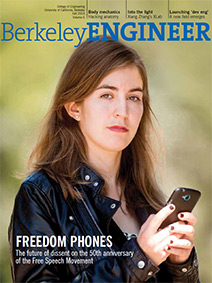Evolutionary algorithms
Darwin was the first to marvel at the diversity of life that natural selection has produced, given that the evolutionary forces of “survival of the fittest” and diversity appear to be in opposition. “There is a paradox in evolution,” says Umesh Vazirani, Strauch Professor of electrical engineering and computer sciences and director of Berkeley’s Quantum Information and Computation Center. “Suppose the mixing of genes through sexual recombination helps create a perfect individual. That perfection gets lost in the next generation, because the offspring inherits only half the perfect parent’s genes.” Vazirani and his colleagues have developed an algorithm that helps demystify this paradox, demonstrating that diversity results from the selection process as well as genetic mutations. They noticed that genes prefer a 50-50 distribution; even if there is an extremely successful genetic trait, evolution doesn’t want lesser traits to become extinct. Their algorithm works to maximize the trade-off between going all-in on a successful genetic trait and hedging bets by not committing to any one specific trait. This type of algorithm has been used in computer science, statistics and economics, but researchers have now discovered that it can be applied to nature, as well.
